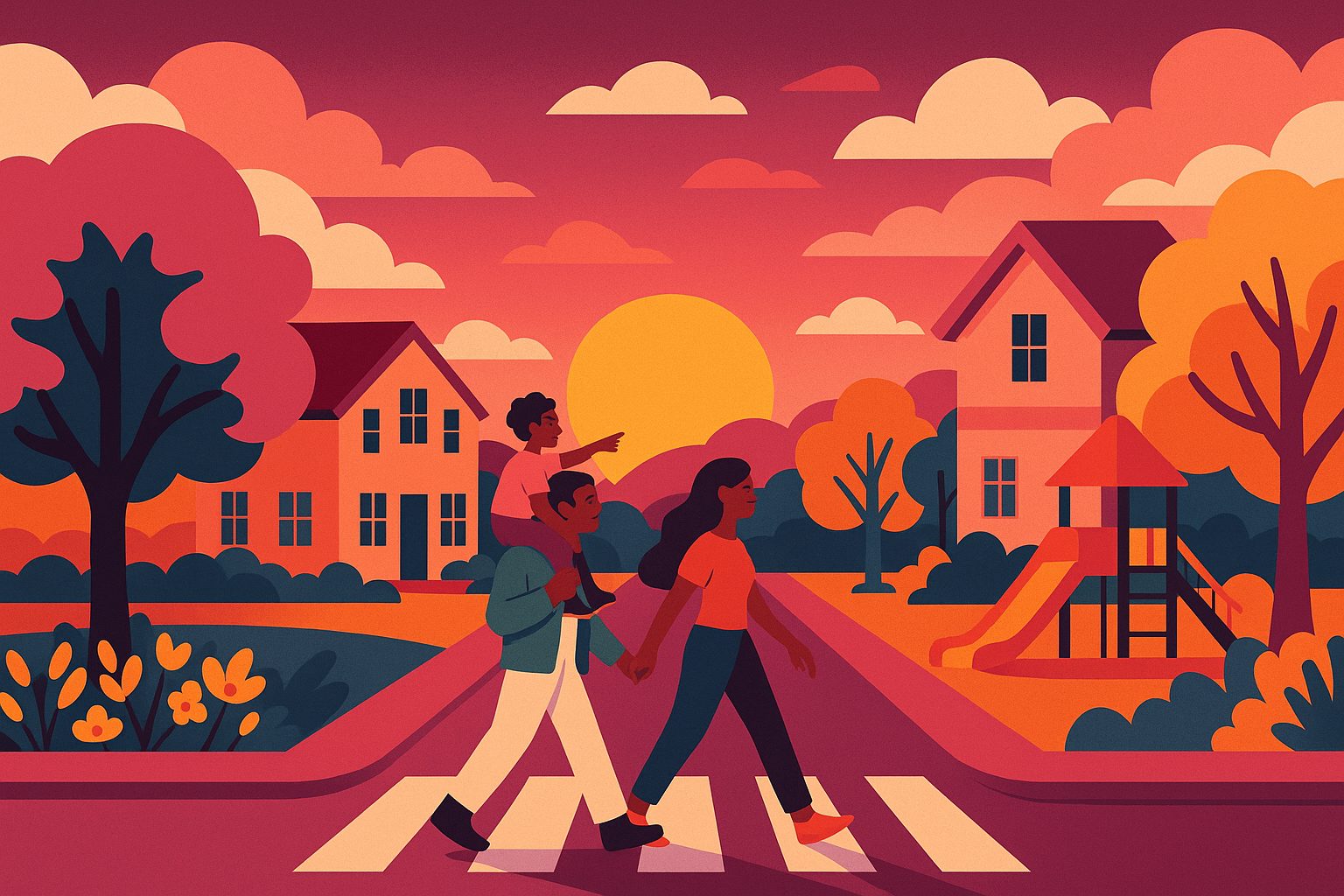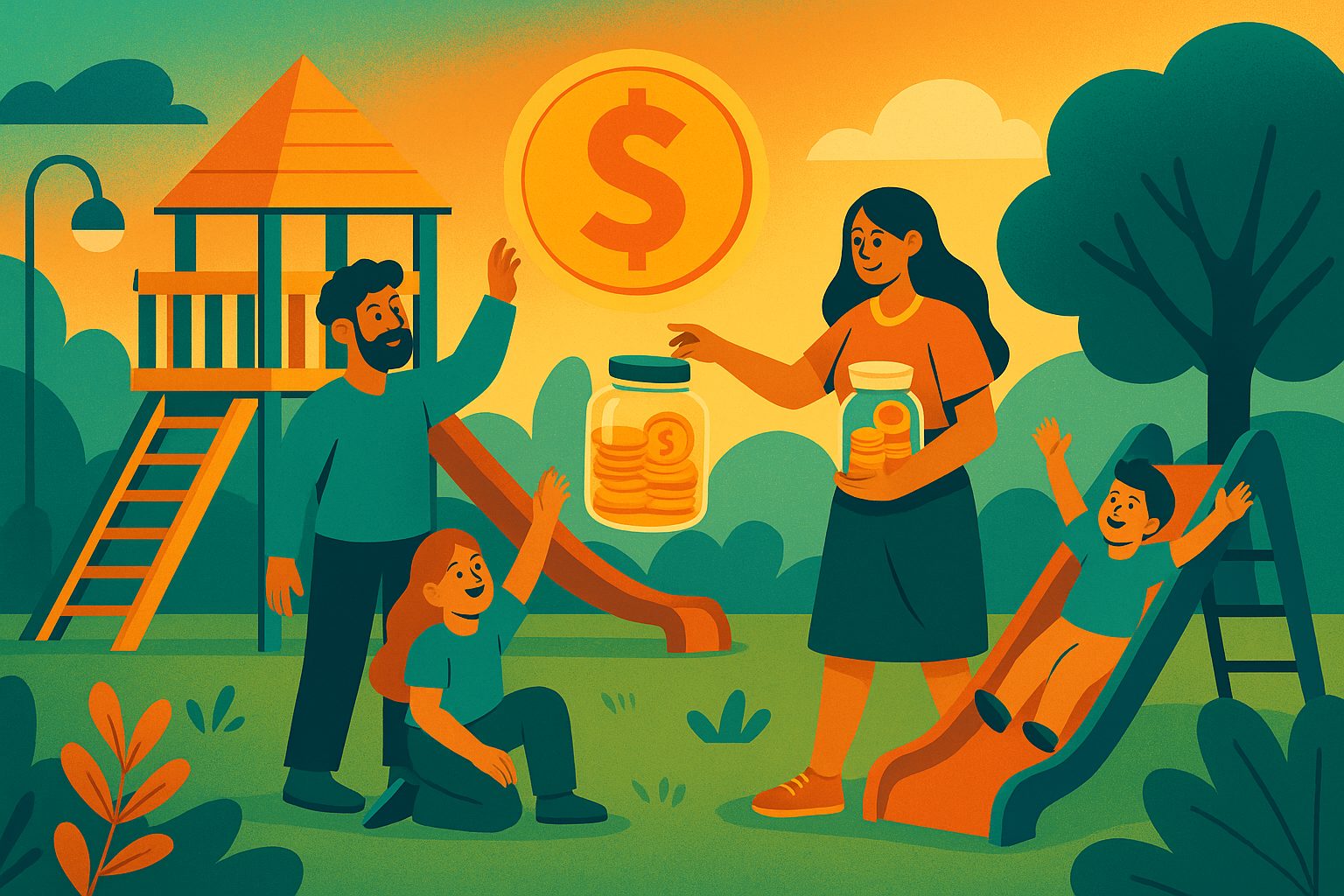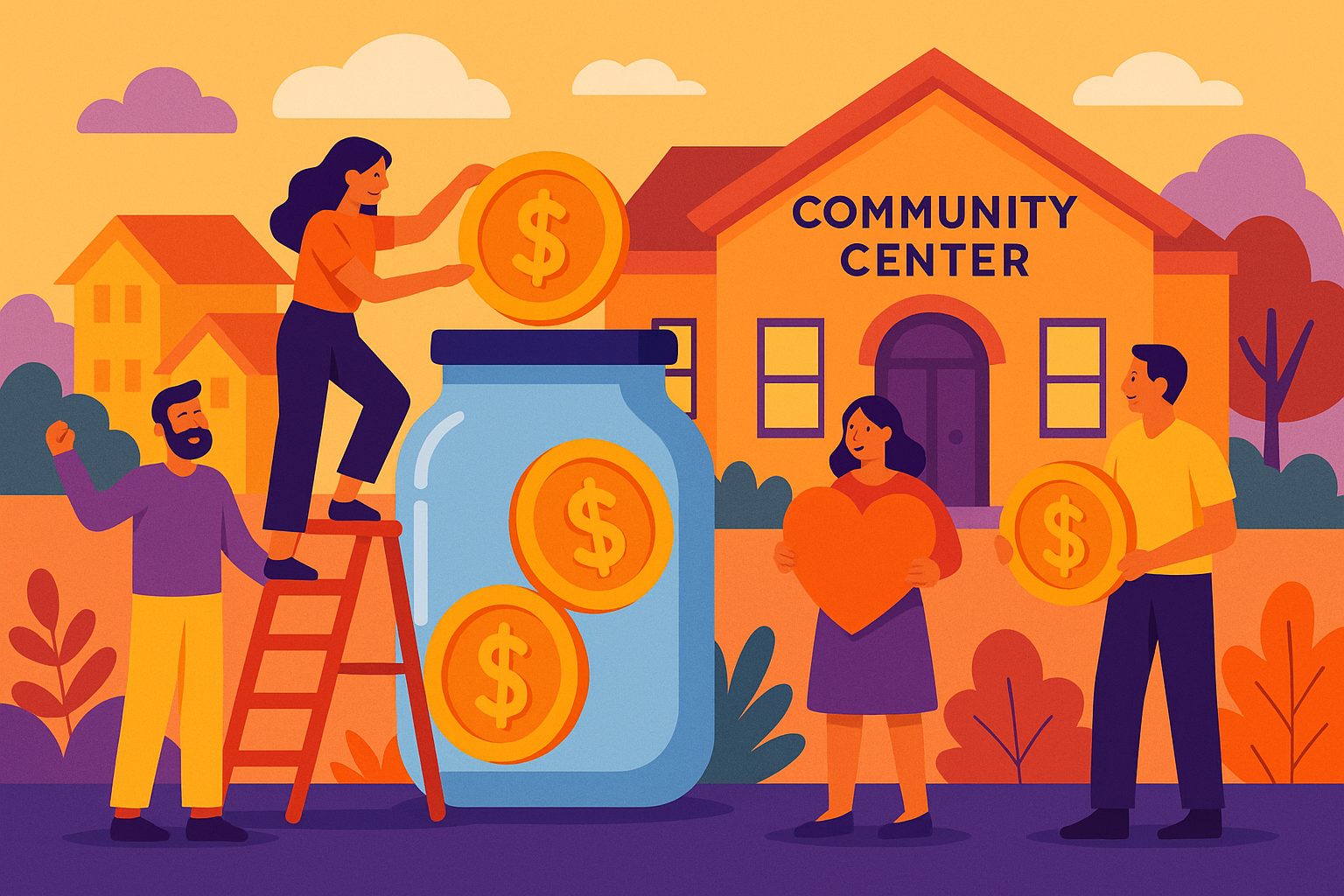Crowdfunding and the New Urban Revolution
In cities around the world, a quiet revolution is taking shape—one that doesn’t begin in government buildings or real estate boardrooms, but rather in neighborhood parks, public plazas, and forgotten alleyways. The spark behind this movement? Crowdfunding. Once the domain of tech gadgets and indie films, crowdfunding is now transforming neighborhoods, one citizen-led project at a time.
Crowdfunded city projects are more than just financial experiments—they’re a powerful expression of local democracy, creativity, and shared purpose. They allow residents to bypass bureaucratic red tape, shape their environments directly, and foster a deeper sense of community ownership. From community gardens and street murals to pedestrian-friendly corridors and pop-up libraries, these projects are reshaping the physical and emotional landscape of urban life.
Community Dreams Meet Tangible Change
There’s something uniquely powerful about seeing an abstract dream take physical form. A vacant lot turned into a lush park. A derelict bus stop transformed into a colorful art piece. These crowdfunded city projects are not just improvements in infrastructure; they are stories made visible—confirmations to what a community values and what it’s willing to invest in.
Take the story of a South Los Angeles neighborhood that crowdfunded solar-powered streetlights. Residents were tired of dark, unsafe streets and unreliable infrastructure. Their campaign not only raised the funds but also caught the attention of city planners and private foundations, resulting in additional investment. Today, that neighborhood is better lit, safer, and more walkable—not because of a government initiative, but because its people took charge.
This kind of change doesn’t just improve physical space—it boosts morale. It tells residents that their voices matter. And that message resonates deeply, especially in underserved areas that have long been ignored by traditional urban planning efforts.
The Ripple Effect: Economic and Social Boosts
One of the most underrated benefits of crowdfunded city projects is the ripple effect they create. Revitalizing a single block can change the perception of an entire neighborhood. Cleaner streets, greener corners, and artistic flourishes attract foot traffic, increase civic pride, and even boost local business revenue.
Imagine a neighborhood that crowdfunds a parklet in front of a row of small businesses. The added greenery and seating area encourage passersby to linger, enjoy a coffee, and engage with the local shops. Over time, this modest public project becomes a community gathering spot, enhances safety through more “eyes on the street,” and inspires further beautification efforts. Local businesses see a rise in customer activity, and the area gains a new reputation as vibrant and people-friendly.
The economic impact is real. Studies show that well-executed community projects can increase property values, attract new investments, and reduce vacancy rates. But even more important than financial returns is the renewed sense of possibility that these projects inspire. When residents see success born from within, it builds trust, collaboration, and a belief that change is not only possible—it’s already happening.
Reclaiming Space and Redefining Ownership
Urban environments are often shaped by outside forces—developers, planners, and distant politicians. Crowdfunded projects flip this script. They represent a return of agency to the people who actually live in and navigate these spaces every day. They allow communities to reclaim public spaces and redefine what those spaces can be.
Ownership, in this context, isn’t about legal deeds. It’s about emotional and communal investment. A sidewalk garden or a neighborhood bulletin board may be technically public property, but when it’s been crowdfunded and cared for by local residents, it carries a different kind of value. It becomes a point of pride—a symbol of community resilience and cooperation.
In cities grappling with gentrification and displacement, this kind of ownership is especially important. It gives long-time residents a say in how their neighborhoods evolve. Instead of watching changes imposed from the outside, they become part of shaping those changes—on their own terms, with their own visions in mind.
Bridging Divides and Building Social Capital
Modern cities often suffer from a paradox: dense populations but growing social isolation. People live next to each other but rarely connect. Crowdfunded projects change that dynamic by creating opportunities for collaboration, dialogue, and mutual support.
When a campaign goes live, it becomes a rallying point. Neighbors who have never spoken find themselves organizing cleanups, sharing ideas, and pooling resources. A campaign to build a playground becomes a story of intergenerational bonding. A community fridge initiative sparks conversations about food justice and mutual aid.
These projects do more than fund infrastructure—they build social capital. They forge networks of trust and shared responsibility. They remind people that community is not just a geographic concept, but a living, breathing entity that thrives on participation.
In many cases, the connections formed during crowdfunding campaigns endure long after the project is complete. Residents continue to collaborate on future efforts, serve as mentors to new organizers, and become active voices in civic discourse.
Amplifying Voices That Are Too Often Silenced
Crowdfunded city projects are also a powerful tool for equity. In traditional city planning models, the loudest voices often belong to the most privileged. Crowdfunding democratizes access to the decision-making table. It allows marginalized communities to raise visibility, advocate for change, and get real results—on their own timeline.
Take the case of a historically Black neighborhood in Atlanta that crowdfunded a heritage trail. City funds had bypassed the area for decades, leaving its cultural legacy overlooked. Through a well-organized campaign, residents raised enough money to install plaques, host walking tours, and preserve oral histories. Not only did the project honor local culture, but it also attracted attention from museums and heritage organizations that then offered additional support.
By elevating stories, needs, and ideas that are often overlooked, crowdfunding offers a platform for authentic, community-led narratives. It helps shift the balance of power, ensuring that city transformation isn’t just something that happens to people—but something they drive themselves.
Inspiring Youth and Future Leaders
Crowdfunded neighborhood projects often become incubators for the next generation of civic leaders. Young people get involved by designing campaign graphics, managing social media, organizing events, and leading outreach efforts. In doing so, they gain experience in public speaking, budgeting, consensus building, and civic engagement.
It’s a crash course in community development, with real-world consequences. Seeing their efforts result in a new park or a public art piece teaches youth that they don’t have to wait to be older or richer to make a difference. They can start now. They can lead now.
This experience can be transformational. Many campaign volunteers go on to start their own initiatives, serve on community boards, or pursue careers in public policy, urban planning, or nonprofit leadership. In this way, crowdfunded projects don’t just build neighborhoods—they build people.
When Cities and Citizens Collaborate
One of the most exciting developments in civic crowdfunding is the growing willingness of cities to collaborate with grassroots organizers. Many municipalities now recognize the power of these citizen-led efforts and are finding ways to amplify them through match funding, in-kind support, or streamlined permitting.
Cities like London, New York, and Boston have created programs that formally integrate crowdfunding into urban development strategy. They offer platforms, toolkits, and sometimes even training to support local campaigns. This alignment allows for a powerful blend of top-down resources and bottom-up innovation.
These partnerships aren’t just financially efficient—they’re politically smart. They give city governments a direct line to the hopes and concerns of their citizens. They turn planning into a shared conversation rather than a contested battle. And they often result in faster, more meaningful improvements to the urban fabric.
Challenges That Can’t Be Ignored
While the impact of crowdfunded projects is impressive, it’s also important to acknowledge the limitations. Not every neighborhood has equal access to the resources needed for a successful campaign. Digital literacy, language barriers, fundraising networks, and even time constraints can all affect a community’s ability to launch and sustain a campaign.
There’s also the risk that cities may over-rely on crowdfunding to cover for budget shortfalls or sidestep public responsibility. Civic crowdfunding should complement—not replace—public investment in equitable infrastructure and services. It works best when it’s viewed as a tool for empowerment, not a substitute for systemic support.
To mitigate these challenges, many platforms now provide coaching, translation services, and equity-centered design resources. Local nonprofits also play a vital role in leveling the playing field, offering mentorship and logistics help to communities with fewer advantages.
Neighborhood Identity, Reinvented
Crowdfunded city projects don’t just change what a neighborhood looks like—they change how it feels. They infuse space with meaning and memory. A mural becomes a tribute to a beloved community elder. A mini-library becomes a beacon of learning in a literacy desert. A garden becomes a classroom, a gathering space, and a sanctuary all in one.
These projects contribute to a unique neighborhood identity that can’t be engineered by top-down planning alone. They reflect the specific values, dreams, and character of the people who live there. And in a time when many cities struggle with sameness and gentrification, this authenticity becomes an invaluable cultural asset.
Residents who once felt invisible suddenly find themselves as co-creators of their environment. That shift in perspective is perhaps the most profound impact of all.
A Movement That’s Just Getting Started
The impact of crowdfunded city projects is undeniable—and still growing. What began as isolated efforts are now coalescing into a global movement for participatory urbanism. Cities, citizens, platforms, and funders are coming together to experiment with new ways of designing, building, and sustaining shared spaces.
The future holds even more promise. Technologies like geolocation, AR visualizations, and smart sensors will allow campaigns to be more data-informed and immersive. New financing models—like recurring donations, social impact bonds, and decentralized autonomous organizations—will expand how communities invest in themselves.
But at its heart, the power of crowdfunded neighborhood projects will always come down to people. People who believe in something better. People who are willing to organize, promote, paint, plant, and push until their vision becomes reality. People who understand that change doesn’t come from waiting, but from doing.
Redesigning Cities Through Collective Will
If cities are reflections of our collective values, then crowdfunded projects are the brushstrokes of a more hopeful urban future. They prove that transformation doesn’t require millions of dollars or massive infrastructure—it begins with the courage to ask, “What if?”
What if this alley could be a playground? What if this wall could tell a story? What if we came together and made it happen?
In the end, the impact of crowdfunded city projects on neighborhoods is about more than parks, murals, or benches. It’s about imagination turned into action. It’s about creating places we can be proud of, and communities where everyone feels they belong. And perhaps most importantly, it’s about reminding us that the power to build a better city has always been in our hands.




